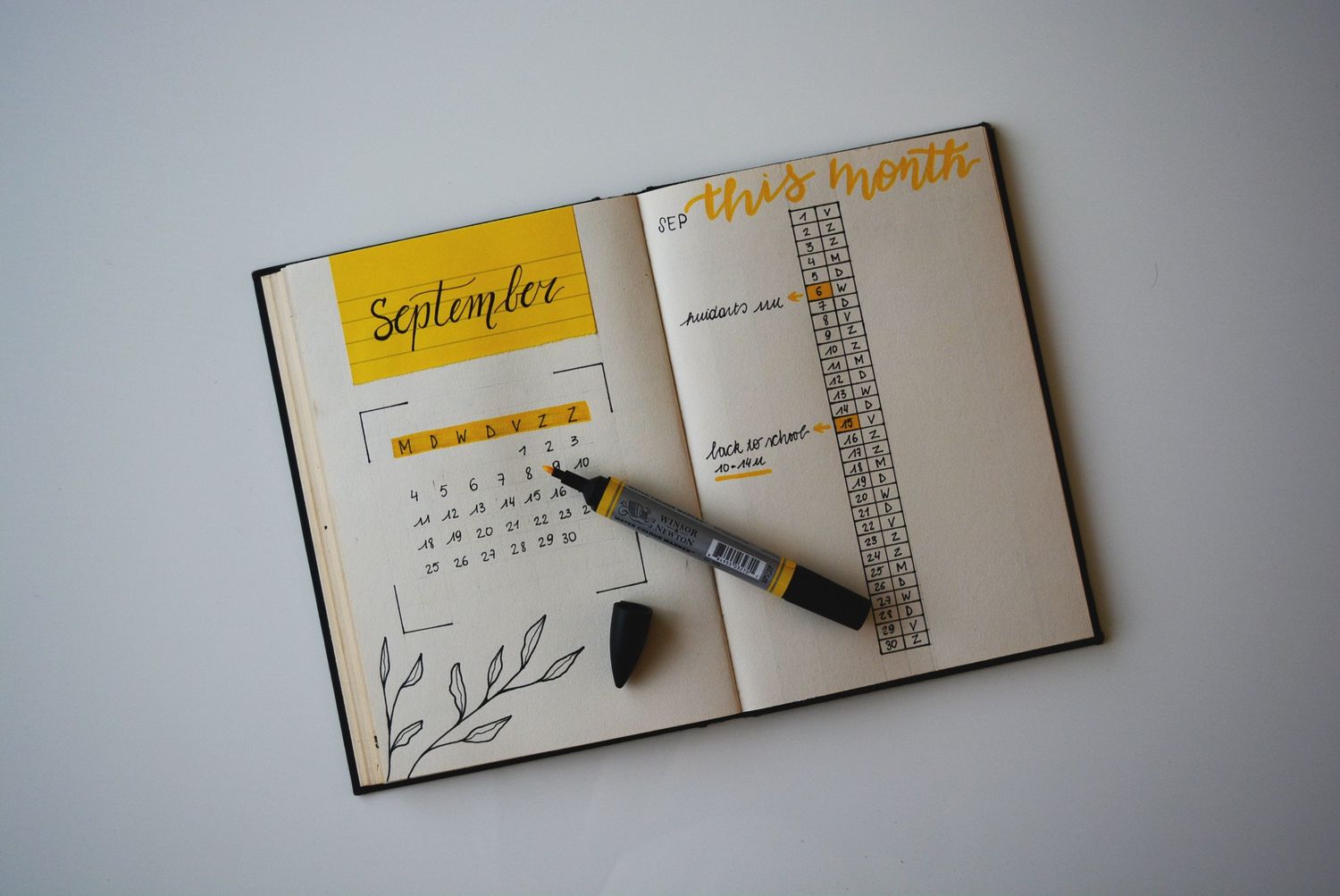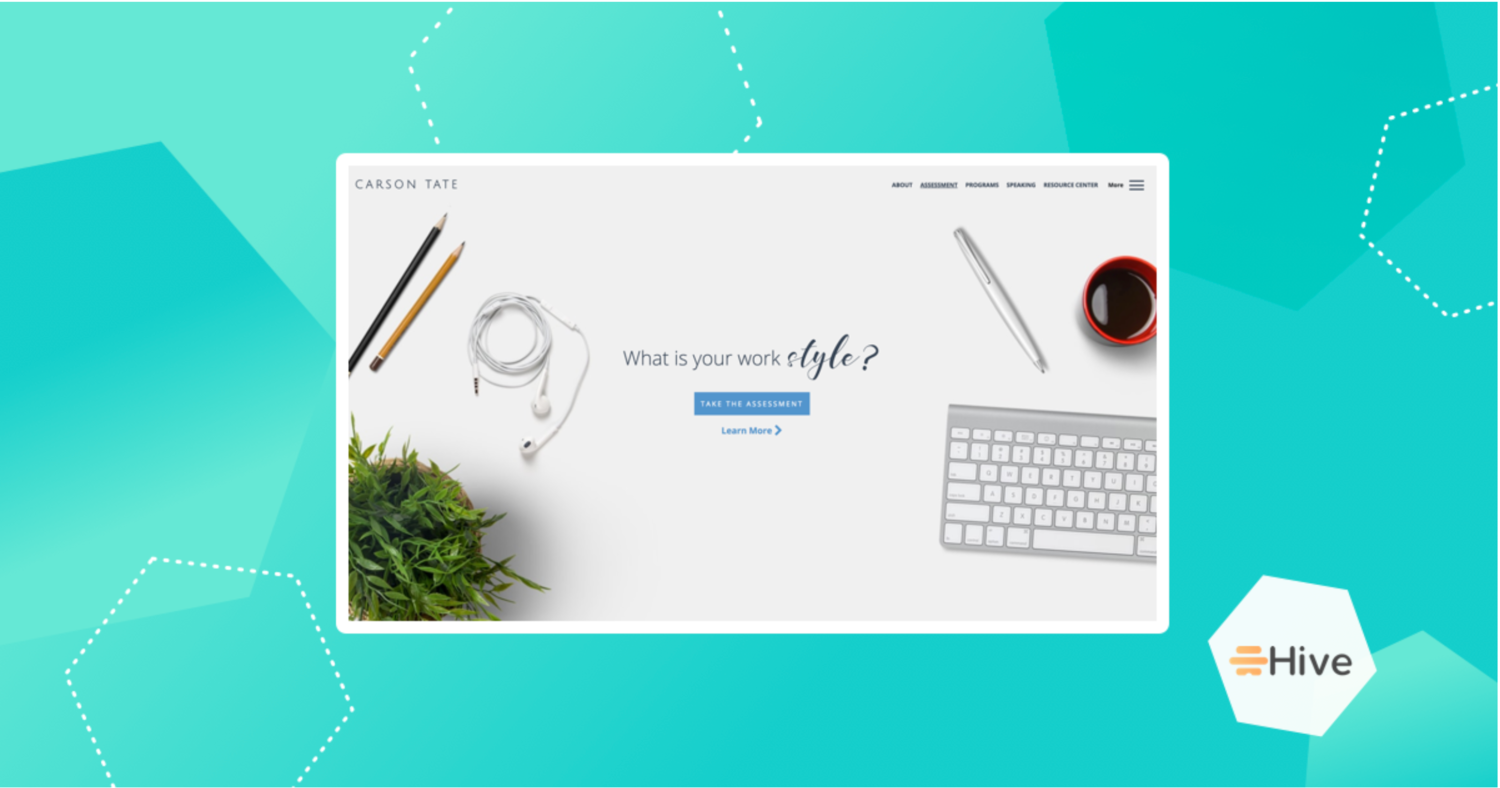I remember in school they used to give us all the same day planners, and you were forced to use these planners in order to be “more organized and productive.”
The thing was, they absolutely never worked for me — or for the majority of my classmates.
In fact, today, it’s still wildly difficult to find the “perfect” planner even though I have an endless array of options.

Check out Medium any day of the week, and you’ll be blasted with productivity advocates who promise to teach you how to get more done with THEIR systems.
And that’s where the problem lies… It’s THEIR system. Not YOUR system.
As we all know, we’re all wired differently, so why are there all these one-size fits all approaches to productivity? It doesn’t make sense.
In this post, you’ll learn about the different productivity styles and how to figure out your own productivity style based on your unique personality.
Shall we?
The 4 Productivity Styles
It’s pretty obvious that we all function differently. What works for you, probably won’t work for your colleague.
This is a big deal because the way in which we think, learn, communicate, process information, execute actions and make decisions all very much influences our personal productivity.
Productivity Coach and Consultant Carson Tate created the most widely recognized Productivity Style Assessment because she believes knowing your style will allow you to manage your work and life more effectively. Not to mention, you’ll reach your goals faster.
Here are the four types of productivity styles, according to Tate.

“Being busy is a form of laziness – lazy thinking and indiscriminate action. Being selective – doing less – is the path of the productive. Lack of time is actually a lack of priorities.” — Tim Ferriss
The Prioritizer is an analytical, realistic and logical thinker who is gung-ho on the facts. She likes to know how long a task will take beforehand, so she can plan her work days more efficiently.
Of course, this means she also rigorously prioritizes her tasks, focusing on executing them in an order where the most important tasks (MITs) are completed before the others on her list.
Strengths:
- Decision-making
- Prioritizing
- Analyzing
- Problem-solving
Weaknesses:
- Small talk: The Prioritizer has no time for “kickin’ it” with the team, which means, no small talk, please. It’s all work, all the time with her.
- Don’t spend enough time on the “how:” Prioritizers don’t like to focus on how things will get completed, just the fastest way they can be completed.
- Rigid, controlling: Prioritizers are usually controlling and rigid and are known in the office for being a bit too competitive and driven.
Likes:
- Critical analysis
- Fact-based debate
- Being efficient
Dislikes:
- Mismanaging time
- Small talk
- Inaccurate or incomplete data and facts
- Vague instructions
- Oversharing personal life
Communication style:
Prefers “What” questions.
- What does X do?
- What are the problems?
- What are the results?
The best way to answer the above is with concise, precise facts.
Decision-making style:
First, a Prioritizer gathers all the facts, then analyzes problems and develops hypotheses. They argue rationally and logically solve issues. And of course, they want to see the data!
Environment:
The Prioritizer’s workspace usually has a professional look and feel. Everything is clean and orderly, and there’s little to no decor in their offices.
Favorite productivity tools:
- Time tracking tools
- To-do list apps
Shining Examples:
- Sheryl Sandberg
- Marissa Mayer

“There cannot be a crisis next week. My schedule is already full.” — Henry Kissinger
Organizing is kind-of like the Planner’s “thing.”
She’s fantastic at organizing, sequencing and detailing actions. Whereas the Prioritizer solely focuses on the details that will get a project finished ASAP, the Planner prefers to detail ALL aspects of the project.
Strengths:
- Details
- Planning, scheduling, and organizing
- Anticipating problems
- Project management
Weaknesses:
- Doesn’t work well without a plan: The Planner does not like changes or doing anything that hasn’t been planned out prior.
- Far from spontaneous: They frequently miss opportunities because of their resistance to deviate from the plan.
Likes:
- Schedule/action plan
- Timely and through follow-ups
- On-time appointments
- Getting to the point
Dislikes
- Last-minute work
- Late work
- Lack of agenda
- Disorganization
- Topic-hopping
- Typos and similar errors
Communication style:
Prefers “How” questions.
- How frequently does X occur?
- How do you want to approach this project?
Decision-making style:
The Planner is practical and approaches decision-making in this sense. They often find overlooked flaws by reading the details others skip over.
Once a Planner has made her decision, she won’t budge on it.
Environment:
The Planner’s workspace, like her decision-making style, is very practical.
It usually has a traditional look and feel, with no unnecessary items. You’ll also likely find professional credentials and awards plastered around their office.
Favorite productivity tools:
- Calendar apps
- Project planners

“Listen to your gut, no matter how good something sounds on paper. Instincts play a special role in any kind of business you engage in. They are your guide in the decision making process and the backbone of your thoughts. Following your instincts is as simple as giving them a voice, challenging yourself to look at things differently and learning to look before you leap.” — Donald Trump
Unlike the above two styles, the Arranger is more emotional and intuitive, which is why the Prioritizer and the Arranger don’t usually get along too well.
This is the colleague who always makes you feel better and encourages you to finish your work.
Strengths:
- Communication
- Empathy
- Collaboration
- Intuition
- Teaching
Weaknesses:
- Talking too much: Arrangers may need be careful to not over talk and under do.
- Including irrelevant people: They tend to include too many people in an email chain.
- Stories
- Conversations
- Processing feelings and emotions
- Asking questions and addressing concerns
- Acknowledgement and appreciation
Dislikes
- When people rely too much on data and facts
- When people are cold or too serious
- Lack of personal interaction
- Tone of urgency or demand
Communication style:
Prefers “Who” questions.
- Who are the primary stakeholders?
- Who will benefit most from this project?
- Who else is involved?
Decision-making style:
The Arranger makes decisions by intuitively sensing how others will feel. They recognize interpersonal difficulties and pick up on non-verbal stress signals.
Environment:
Their environment is usually welcoming and inviting. There’s often personal photos, and you can get a sense of who they are by just floating by their space, from their personal objects and pictures that surround their desk.
Favorite productivity tools:
- Focus-enhancing tools, such as Brain.fm
- Visually appealing office supplies, such as Moleskine notebooks
- Collaboration tools
Shining examples:
- Oprah Winfrey
- Bono
- Mother Teresa

“You can’t connect the dots looking forward; you can only connect them looking backward. So you have to trust that the dots will somehow connect in your future.” ― Steve Jobs
The Visualizer is also intuitive and has a large capacity for breaking down and combining different elements of a project.
She works well under pressure and gets bored if she doesn’t have a lot of balls in the air.
Strengths:
- Connecting the dots
- Innovative ideas
- Strategic thinking
- Creative problem-solving
- Open-minded
Weaknesses:
- Derails projects: The Visualizer has a lot of ideas, which can derail projects. So can their spontaneity and impulsiveness.
- Long, run-on emails: They tend to write lengthy emails, filled with tons of concepts and ideas.
Likes
- Broad frameworks
- Connecting the dots among approaches
Dislikes
- Details
Communication style:
Prefers “Why” questions.
- Why is this process better?
- Why do we do things this way?
Visualizers act spontaneously and prefer ideas.
Decision-making style:
Visualizers make decisions by generating their own solutions to problems. They’re very perceptive and know when things are about to change, leading them to challenge established and outdated policies or systems.
Environment:
Their space is typically laid back and original, with an emphasis on space and light. They also prefer colorful, varied and decorative schemes that are visually appealing.
Favorite productivity tools:
- Mindmaps
- Sticky notes; colored pens and paper
Shining examples:
- Steve Jobs
- Richard Branson
- Larry Page
Assess Your Productivity
Fun fact: 95 percent of people think they’re self-aware, but only 10-15 percent truly are.
For this very fact, we created this section, to help you correctly diagnose your productivity personality so you can get on with a more productive life ASAP.
Sound good? Here are three ways to gain more accurate insights into yourself and your productivity.
1. Take a quiz.

In fact, it’s her book we extracted the above information from, so it only makes sense that you take her scientific productivity style quiz.
First, she’ll collect your basic information (email, name, etc), then it’s onto the ~30 question-quiz that takes ~3 minutes to complete.
All you have to do is rate how true a brief sentence is on a scale from 1-10, like this…

Once you’re done, check your email for your results, which will look similar to this:

We also created a fun, ~1-minute quiz to help you determine your work productivity style.

Tasha Eurich wrote the book Insight, which explains how un-self-aware we are, and she created a quiz based off of it.
Ask a friend to answer a few questions about you, and you’ll answer a few about yourself too. Then, you’ll receive your results via email about how self-aware you are.
While this isn’t a productivity quiz, it’s an important assessment to make you realize how you may not be the best person to diagnose yourself.
2. Sign up for Crystal Knows.

Crystal Knows is a freemium web app that predicts yours (and everyone else’s) personality based on your digital presence.
You can also take a DISC personality test to make it more accurate.
By understanding yourself (and your co-workers) better, you can work more productively and efficiently, so we highly suggest you check this tool out.
3. Review your productivity dashboard.

Last but certainly not least, another way to figure out your productivity personality is to review your productivity tools’ analytics/dashboard.
Consider:
- When you complete your most important tasks (MITs)
- How many hours your spending on specific activities
- How many MITs you’ve actually completed each week
Discover who you are now.
The first step to working more productively is understanding you and how you work best.
If you want some guidance, take our fun, ~1-minute quiz to learn what your productivity personality is.
Originally published at hive.com


